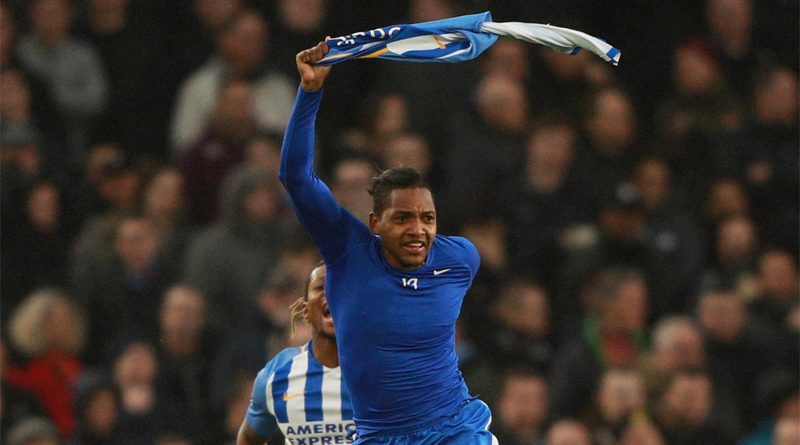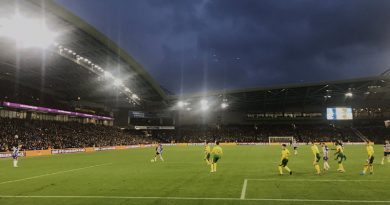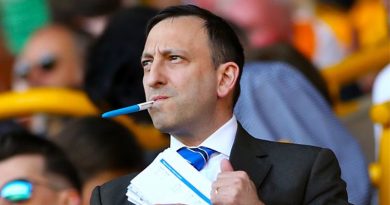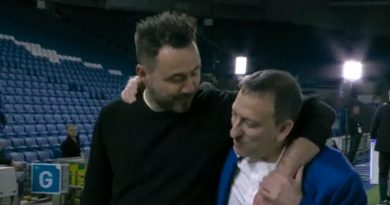What does the future hold for Jose Izquierdo?
We miss Jose Izquierdo. The Colombian winger is an infectious personality with a ridiculously goofy laugh, an always-happy complexion and a pet pig with more Instagram followers than three quarters of the Albion’s players.
He also happens to be one of the few genuine game changers that Brighton have within their squad. His highlight reel is full of fantastic goals that no-one else at the club could score and his unpredictability makes him an absolute bastard to mark for opposition full backs – half the time he doesn’t look like he knows what he’s going to do next, let alone anybody else.
If the Albion medical team can get him fit and firing, then you suspect he’d be a real asset in Graham Potter’s brave new world of attacking football. Sadly, that seems like a massive if.
Izquierdo has been suffering from knee complications for over a year now. This is extremely bad news, as anyone who read Micah Richards’ insightful interview with the BBC over the premature end of his footballing career will realise.
Richards of course was meant to be the next big thing in English football. He made his England debut at 18, becoming the youngest ever defender to be capped by the Three Lions at the time.
A Premier League title and FA Cup followed with Manchester City before injury-hit spells with Fiorentina and Aston Villa. It says much about the way he disappeared from view that his retirement in the summer at the age of 30 after 245 career appearances almost went under the radar.
By the time Richards announced his decision to hang up his boots, he hadn’t played a competitive game for 32 months. His career was destroyed by knee complications, brought about through a combination of bad luck and some chronic mismanagement. The parallels with what we know about Izquierdo’s situation are a little worrying.
Richards told the BBC that his problems first flared up at the age of 19, initially as swelling on the knee. On doctor’s advice, he had cartilage shaved down in an operation that left him on the sidelines for four months.
From there, Richards said the issue gradually got worse. He could continue to play, but the knee and its workload had to be carefully managed.
City did that by and large and he was Roberto Mancini’a first choice right back as they lifted the title in the 2011-12 AGGGGGGUUUEEEEEEOOOOOOOOOOOOOO season.
But at the start of the 2012-13 season, he tore his meniscus. This required another operation and another six months out. More problematically, it began to cause further issues across his whole body.
Because the knee is connected to virtually every muscle in the leg, it can affect other areas. That’s why knee injuries can have such a detrimental impact on a footballer’s career. Richards began suffering with hamstring problems in particular as a result.
His lack of fitness saw him leave City for Fioretina on loan and then a permanent move to Villa followed. Richards says that Tim Sherwood was brilliant at looking after the injury, allowing time off training and a reduced schedule – similar to how Tottenham Hotspur managed to get Ledley King onto the pitch despite his own knee problems.
Villa however were sliding towards the Championship; Sherwood was soon sacked and in came Frenchman Remi Garde. According to Richards, Garde would only select players who could do what the new boss asked of them in training. As a result, Richards would no longer be managed according to his knee’s needs.
Richards says that the moment things went south for him was when Garde had his players running for miles and miles around an obstacle course. By that point in time, Richards’ back was playing up because of his knee and although he managed to complete the session, his knee was sore beyond belief.
From that point on, anytime he did anything strenuous with the knee it swelled up. He could just about train, but when it came to the intensity of a full-on match, his knee simply couldn’t cope. He remained on Villa’s books for another two years, trying to find a way back but in the end he was beaten. It was game over.
Izquierdo’s own knee troubles began at the World Cup, where he picked up a cartilage injury to his left knee whilst representing Colombia. The problem began in their opening group stage defeat against Japan, which Izquierdo played 70 minutes in before being withdrawn.
He dismissed the pain in his knee as the result of a kick and continued to train and play through it, desperate not to miss out on representing his country at the pinnacle of the sport.
Even so, there was clearly an issue and Izquierdo didn’t feature again as Colombia defeated Poland and Senegal before crashing out in the last 16 to England.
A scan after the tournament showed a small tear and so Izquierdo rested the knee. While the rest of the Albion squad were returning for pre-season in the summer of 2018, Izquierdo was receiving extra time off in the hope that the problem would repair itself.
It wouldn’t. After just two sessions back in training after his time off, the issue reared up again and another scan revealed that he had injured his meniscus – the same area of cartilage that Richards damaged.
The problem required surgery, ruling Izquierdo out for the first six games of the 2018-19 Premier League campaign. He returned for the 2-0 defeat away at Manchester City in late September and worked his way back towards full fitness before suffering a different tear to the meniscus in the 3-1 win over Crystal Palace in December, this time at the back of the knee.
According to The Argus, a second operation was ruled out on medical advice. Instead, Izquierdo is said to have sat out the next two months and 11 matches before being pressed back into action in February as the Albion were sliding dangerously down the Premier League table.
Anyone who saw him in his eight subsequent appearances could see that he wasn’t fit. Whether Chris Hughton rushed him back out of desperation as we hurtled towards the relegation zone we’ll never know, but he quite plainly should not have been playing.
That led to rumours that he had in fact had a secret second knee operation in that spell out of the side between December and February. Whatever the treatment prescribed, it clearly hadn’t worked and it was no surprise when the club revealed that Izquierdo would require another operation in the summer.
The question was why did the Albion play him through injury? They could have operated as soon as the problem flared up again in February or March and had him potentially back to try and get a full pre-season under his belt in the summer.
Instead, they put him through the ringer of Premier League football for another two months, potentially doing irrevocable damage. As Richards’ story shows, knee injuries are not something a player should be pushed through if you value their future career prospects.
When that latest operation was announced in May, The Argus reported that the procedure was “not expected to sideline Izquierdo for a sustained period but he will be missing when the Seagulls’ third Premier League campaign, and Potter’s first as head coach, commences in August.”
The goalposts seemed to have been moved since then. Brian Owen has tweeted a couple of times in recent weeks that we’re unlikely to see the Colombian back in an Albion shirt anytime soon.
Given that the operation took place within a week or two of the end of the 2018-19 season, we’d say that five months out is a pretty sustained period. already So, either the club were talking bollocks when they offered that prognosis, or something has gone wrong.
We’re praying it isn’t the latter, especially as the signs don’t look good when you read that interview with Richards. Obviously, each injury and every player is different. What happened to Richards could be worlds apart from what is happening to Izquierdo.
But the similarities are there for all to see. Izquierdo has damaged the same part of the knee as the former England international. He’s played through the pain barrier for Colombia and the Albion, just as Richards did for Villa, possibly doing worsening the issue in the process. And now we haven’t seen hide nor hair from him, just like how Richards disappeared from view at Villa Park as he struggled to come back.
In fact, you could argue that the challenge facing Izquierdo to recover sufficiently is even more serious. While Richards was a defender, Izquierdo’s game is based on explosive pace and unpredictability which is a result of his ability to twist and turn his way down the flanks.
All of that speed and movement comes from the knee. He’s right footed too, so it’s his injured left leg that he relies upon for power and strength.
If it is no longer able to function as effectively as it once did as a result of two tears and two operations, will Izquierdo even be the same player when he returns?
Let’s hope that he is. Goodness knows we could do with him.




